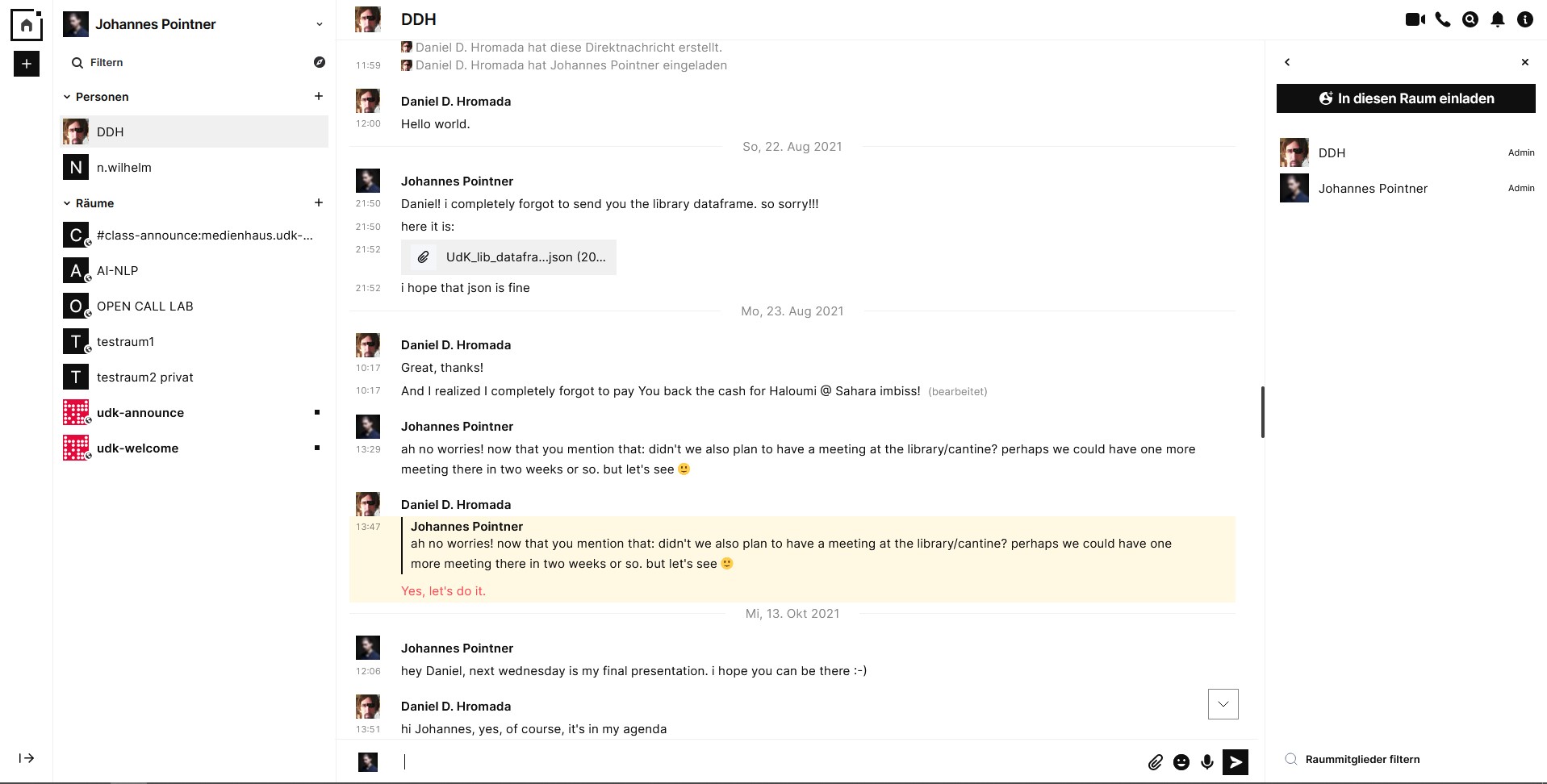3 Architecture:
A platform for knowledge
3.1 Virtual and real-world platforms
In the course of the first Covid-19-lockdowns a work group formed within UdK to create a virtual equivalent to the real-world university life that was very much restricted in this time. On short notice, they designed a social platform based on the open-source Matrix protocol so that students and teachers have a common space for all sorts of communication. Its very powerful functionality allows not only for chatting, videocalling or the sharing of files with any other member of UdK. But it’s also possible to create groups, post on public notice boards etc. In this way the project went far beyond the original idea to provide a provisional solution for academic processes to take place. By the introduction of a virtual level, you could suddenly speak to people you would never have met because they usually stay in a different building. Groups can be flexibly created around one topic without having the need to book a room. You could easily stay in touch with classmates, despite of different schedules and curricula.
We take these basic forms of participatory and decentralized communication for granted on social media, but at least in my previous, analogue academic life interactions like that were harder to achieve. First of course, because the curricula don’t allow so – they rather work inwards; encapsulating and hierarchically restricting each study program to its assigned field. But second, also because the material environment (architecture) is clearly not designed for this sort of usages. Parallel to my critique of the tree-knowledge, architecture was (and still is) designed to host linear functional sequences. (The basic functional layout of most academic libraries looks more or less like this: 1. You enter an entrance hall. 2. You go to the lockers to leave your jacket and bag there. 3. You enter the actual library by passing a checkpoint. 4. You directly go to a vacant desk, or: 5. Go to look for a book/publication in one of the library racks. 6. You reverse all the previous steps to leave the library again. Additionally, the behavioral rules in library spaces restrict interaction as much as possible.) In the last decades, with the help of digital technology’s inherent functioning, a new spatial regime has been established, which particularly invokes a relational conception of space based on participation and decentralization. Why shouldn’t our real-world spaces enable similar processes as our virtual ones? There is the fear nowadays that our social life takes place more and more in virtual spaces. In my opinion this tendency is not only due to the virtual ones being too invasive but also because our real-world ones lack basic qualities to meet the legitimate expectations of a more flexible and interactive functionality.
